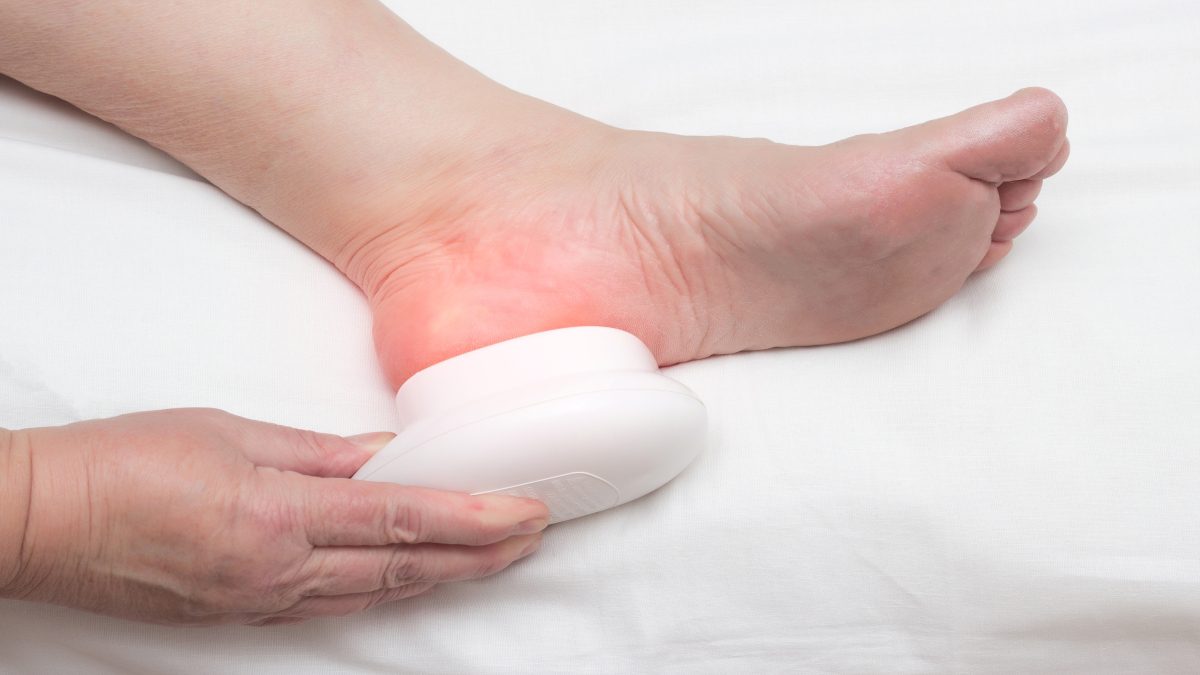Treatment of plantar fasciitis
Most of the time, plantar fasciitis can be treated without surgery. Greater than 90% of people report improvement in symptoms within ten months of initiating simple methods of treating the condition.
Conservative Treatments for Plantar Fasciitis
- Avoidance of activities: To stop the inflammation of plantar fasciitis, decreasing the activities that stress the plantar fascia are usually recommended. For example, patients may be advised to replace running on hard surfaces or step aerobics with swimming.
- Ice therapy: This simple treatment for plantar fasciitis involves rolling the bottom of the foot over a bottle of cold water or ice for 15 or 20 minutes several times daily.
- Physical therapy: Tight muscles in the calves and feet can make plantar fasciitis worse. Exercises to stretch these muscles and the Achilles tendon and the plantar fascia can help. Exercises to strengthen the muscles of the lower leg are also often helpful because these muscles stabilize your heel and ankle.
- Splints, taping, or orthotics: Cushions, heel cups, or arch supports are sometimes used to help evenly distribute weight and pressure on the foot. Sometimes splints are worn at night to stretch the arch of the foot and the calf muscle. Taping the foot to support it is also sometimes recommended.
Plantar fasciitis medications
Certain medications for plantar fasciitis are used to alleviate the symptoms of the condition.
- Anti-inflammatory medication: Over-the-counter nonsteroidal anti-inflammatory drugs like naproxen and ibuprofen can help decrease inflammation and ease plantar fasciitis pain.
- Corticosteroid injections: Cortisone is a powerful anti-inflammatory drug. Sometimes it is injected through the skin into the plantar fascia to decrease pain and inflammation. The number of injections allowed is usually limited, as multiple cortisone injections can weaken the fascia and lead to tears. Tears in the plantar fascia can cause chronic pain, flatfoot, or other complications.
Plantar Fasciitis: Other Treatment Methods
If simple treatments like those listed above are not successful in controlling the symptoms of plantar fasciitis, your health care provider might suggest:
- Extracorporeal shock wave therapy: This procedure uses sound waves to stimulate healing of the plantar fascia, and it is typically used in the treatment of plantar fasciitis that has not improved despite other more conservative treatments. Complications of this treatment include pain, tingling or numbness, and bruising. It is not effective in all cases.
Plantar fasciitis surgery
Surgery for plantar fasciitis is rarely needed and is usually not recommended unless a full year of non-surgical treatments of plantar fasciitis has been ineffective. Procedures might include:
- Plantar fascia release: This procedure involves detaching the plantar fascia from the heel bone. It is effective, but it results in the weakening of the foot’s arch. This surgery is rarely required as a treatment for plantar fasciitis.
- Partial plantar fascia release: In this procedure, the plantar fascia is only partially removed to decrease pressure in the structure.
- Gastrocnemius recession: This operation surgically lengthens one of the two muscles of the calf (gastrocnemius muscles). Making one of the gastrocnemius muscles longer increases ankle mobility and decreases pressure on the plantar fascia.
Among the most common complications of surgery for plantar fasciitis is continued pain following surgery. Nerve damage is another possible complication. Most patients experience good results following surgical treatment of plantar fasciitis.
Useful Advices
- Achieve a healthy weight: This will help reduce stress and pressure on the plantar fascia.
- Support your arch: Wear shoes that support your arch and provide shock absorption. Wear shoes with a low heel, not a high heel. Avoid going barefoot on hard and uneven surfaces.
- Replace worn-out shoes. Be proactive in replacing your shoes, especially if you are an athlete. Get new shoes before they stop providing support. Runners should replace their running shoes every 500 miles.
- Change your activity: If you have plantar fasciitis pain, replace your high-impact sport (jogging, stair-stepping, or aerobic dancing) with bicycling or swimming.
- Ice your foot: Apply an ice pack to the painful area several times a day for up to 20 minutes at a time. Never hold ice directly on one area of the skin. Cover an ice pack with a thin towel, or if you are massaging, move the ice around to prevent damaging skin tissues.
- Stretch: Simple exercises that stretch the plantar fascia, calf muscles, and Achilles tendon can help relieve the pain of plantar fasciitis. Stretch gently and never bounce or jerk when stretching.
Outcome & Complications
If you have heel pain or other symptoms of plantar fasciitis, do not ignore it. Allowing the pain and inflammation to continue can alter the way you walk, leading to pain or other complications involving your knee, foot, back, or hip. Try the simple home treatments suggested, and if your symptoms of plantar fasciitis are not relieved or continue to return, or if you have other questions about plantar fasciitis, contact your health care provider. Your medical team is your best resource for information about problems involving your joints, bones, muscles, and other skeletal structures.
















Leave a Reply
You must be logged in to post a comment.